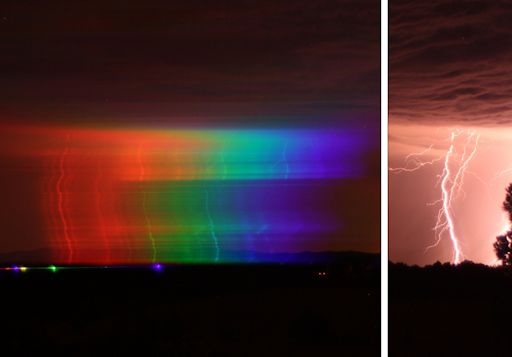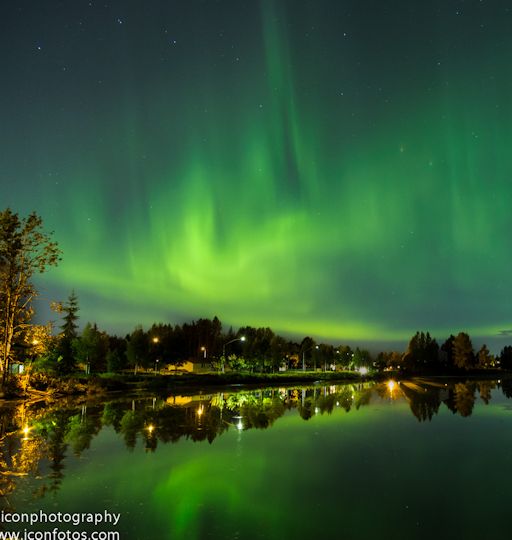When is the best time to see auroras? Where is the best place to go? And how do you photograph them? These questions and more are answered in a new book, Northern Lights - a Guide, by Pal Brekke & Fredrik Broms. | | |
QUIET SUN: Solar activity is low. All of the sunspots on the Earthside of the sun are either stable or decaying. NOAA forecasters estimate no more than a 1% chance of M-class solar flares during the next 24 hours. Aurora alerts: text, voice.
THE COLORS INSIDE A LIGHTNING BOLT: To the human eye, a nearby flash of lightning looks blindingly white. But have you ever wondered what colors might emerge if the flash were spread out chromatically, like a rainbow? During a recent thunderstorm in Tarn, France, David Antao decided to find out. "I am an enthusiastic astro-spectroscopist," he says, "so I couldn't resist shooting some spectra." Here is the result:

"I found it really beautiful!" says Antao.
All of the colors of a rainbow are present in the lightning strike, but some colors are stronger than others. Red, green and blue emission lines zig-zag across the spectrum tracing the shape of the original bolt. These colors are mainly due to the recombination of electrons with nitrogen molecules broken apart and ionized by the searing heat of the lightning discharge. Lines from oxygen, hydrogen, and nitrogen oxides are present, too.
"By analysing this spectra, it is possible to determine the temprature of the lightning," notes Antao. "I am trying to do this now."
Realtime Space Weather Photo Gallery
CME MISSES EARTH, AURORAS APPEAR ANYWAY: The double-CME expected to hit Earth's magnetic field over the weekend either is late or missed entirely. In Alaska, the Northern Lights appeared anyway:

"Aurora season has officially started, and I am pleased to see her beauty again," says photographer Ryan Delos Reyes. "I took this shot from our neigborhood in Anchorage, Alaska, on August 25th."
Even without a CME impact, minor fluctuations in the solar wind were enough to ignite auroras around many parts of the Arctic Circle. Thanks to the waning of the summer midnight sun, the lights were visible for the first time in months. Browse the gallery for more signs that aurora season is underway.
Realtime Aurora Photo Gallery
Realtime Noctilucent Cloud Photo Gallery
[previous years: 2003, 2004, 2005, 2006, 2007, 2008, 2009, 2011]
Realtime Comet Photo Gallery

